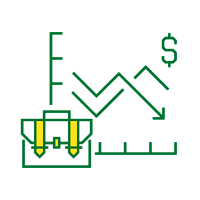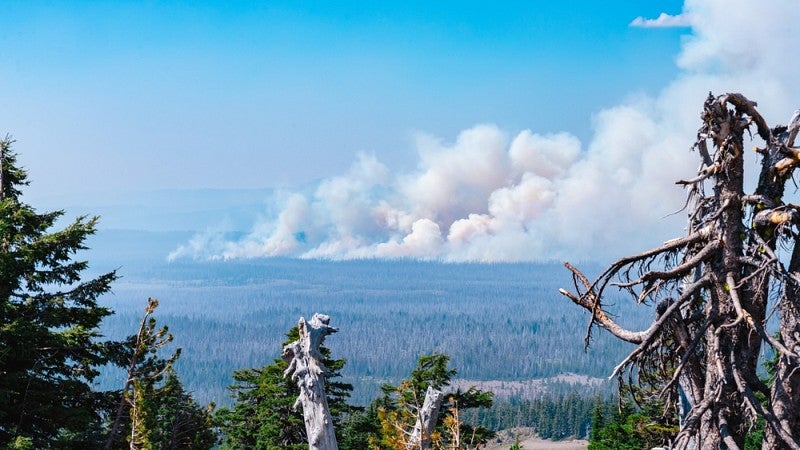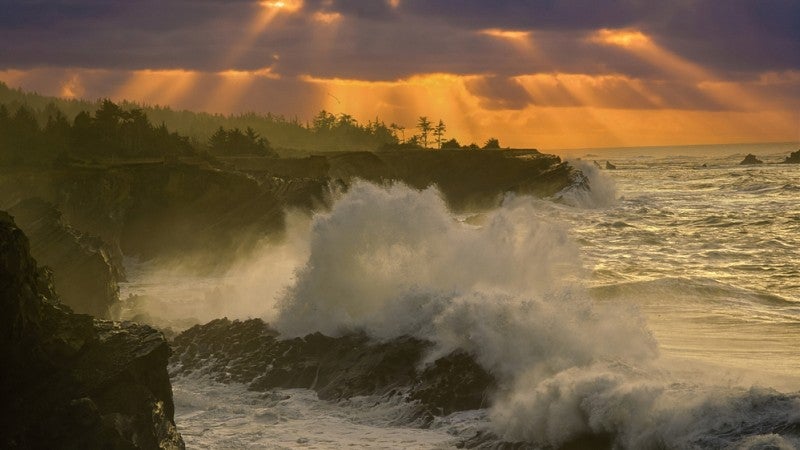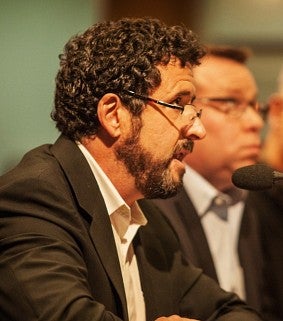
New economics forum begins to tally costs of climate change for Oregonians
The group includes faculty members from UO and Reed College and other economists
Wildfire smoke costs Oregon households $450 per day as they try to adapt by purchasing air purifiers, canceling trips and keeping children at home to minimize their exposure.
That’s just one of many economic impacts of climate change tallied up in a new report put out by a five-member nonpartisan group of economists and policy experts. The Forum on Oregon Climate Economics, or FORCE, recently issued its first report, “The Economic Costs of Climate Change for Oregonians: A First Look.”
Bottom line for Oregonians
Unlike previous assessments that explored the general effects of climate change, often on a national or international scale, the report begins the process of developing evidence-based estimates of the costs to Oregonians.
“We’re trying to estimate and communicate the real-life impacts of climate change on the bottom line for Oregonians,” said Keaton Miller, a forum member and associate professor of economics with the College of Arts and Sciences at the University of Oregon.
The group sifted through available research to estimate specific costs for a range of climate impacts, including extreme heat, wildfires, deteriorating air quality, reduced water supplies, lost or damaged ecosystems, ocean acidification and warming, and global disruptions. The report is not intended to be comprehensive but rather a starting point, Miller said.
“Even with partial information we can say climate change is already having significant negative economic impacts on Oregonians,” he said. “We can already make some estimates of what will happen in the future if we don’t take action.”
More reports to come
The group plans to issue more-detailed reports over the next year addressing additional repercussions not explored in the first report, such as climate change effects on agriculture, forestry, the food system, grocery prices, and the costs businesses and public agencies will incur to adapt.
Although the first report includes many sobering numbers, the economists say they’re not trying to generate fear. They hope that presenting costs of climate change in ways people can understand will inspire local policy action to avoid worst-case scenarios.
“State, local and federal governments, businesses, and the international community are trying to figure out how big of a deal climate change is and how much do we need to invest to prevent it and adapt to it,” Miller said. “It’s really hard to make policy decisions without having some idea of what the costs are if you do nothing.”
This sampling of costs for Oregonians is among the report’s key findings:
Climate Costs
Source: The Forum on Oregon Climate Economics, “The Economic Costs of Climate Change for Oregonians: A First Look.”

Wildfire response:
As much as $3,900 per household per year to contain wildfires and recover from their damage

Wildfire smoke:
$450 per smoke day for an exposed household

Income loss:
Roughly $12,000 in personal income per year due to greenhouse gases already in the atmosphere
Some costs, for example for wildfires, are based on actual costs from past fires and predictions of the frequency and severity of fires based on future climate conditions. For other costs, researchers compare current reality to a “counterfactual,” or a hypothetical scenario in which climate change isn’t happening. Through statistical methods they can estimate costs, such as deaths, job loss or property loss that can be attributed to climate change.
The forum includes economists and policy strategists with years of experience analyzing the economics of the natural environment and translating research into policy.
The convener
They came together at the invitation of Ernie Niemi, a longtime Oregon natural resources economist and UO alumnus. He hopes to reprise a group similar to the Climate Leadership Initiative, a UO-based group in 2009 that provided analysis to legislative leaders in Washington, Oregon and New Mexico.
Throughout his career, Niemi has specialized in estimating “nonmarket costs,” or economic values for things that are not traded for money, such as clean air or healthy ecosystems.
“If they don’t see a market price, people often incorrectly assume the cost is zero, and they look away from it,“ Niemi said.
His analytical findings have been significant in a range of policy and court proceedings, from the debate to protect spotted owl forest habitat to litigation to prevent an oil pipeline and coal-burning power plant in Kenya.
The cost of inaction
The group emphasizes that the dire costs outlined in the report aren’t inevitable.
“Action we take today to both reduce climate-damaging emissions and mitigate the effects of climate change will have a measurable impact on these costs,” the report finds. “Our goal in compiling this report is to highlight that existing work provides a sound and reasonable basis for public investments in climate interventions. While some interventions may come with a substantial price tag, the cost of inaction is even greater.”



Meet the members of the Forum on Oregon Climate Economics:

Keaton Miller, an associate professor of economics with the College of Arts and Sciences at the University of Oregon. He is an industrial organization economist who studies interactions among firms, consumers and the government.

Ernie Niemi, an Oregon-based natural resources economist and UO alumnus. He formed Natural Resource Economics, Inc. in 2012. He specializes in applying the principles of cost-benefit analysis, economic valuation, and economic-impact analysis to describe the economic importance of natural resources.

Joshua Skov, a strategy consultant focused on sustainability and climate change. He is an instructor of management and academic director and industry mentor in the Center for Sustainable Business Practices in the UO Lundquist College of Business.

Noelwah Netusil, Stanley H. Cohn Professor of Economics at Reed College in Portland. Her research focuses on the effect of flooding and floodplain location on property sale prices and on sustainable stormwater solutions.

John Talberth, a UO alumnus and senior economist and founder of the Center for Sustainable Economy, a nonprofit organization based in Port Townsend, Washington. Talberth’s areas of expertise include international trade, public policy, forest management, sustainable development and land use planning.
This work was funded in part by the Roger Worthington Fund for Environmental Economics. The report was prepared independently from funders.

